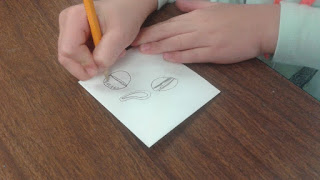A time machine, a time capsule...a seed? During an archaeological dig in the 1960s, a clay jar was found containing seeds from a once common tree. Common, that is, until 500 A.D. Kept in a drawer for 40 years, botanical researcher Elaine Solowey decided to plant one. It sprouted! The Jerusalem date palm travelled to our time from over 2000 years before!
This is the oldest viable seed on record. Most seeds are good for 3-5 years. Some only a year. Without growing these plants and saving their seeds, they become lost to time. We have lost 94% of seed biodiversity due to monoculture farming and buying seeds rather than saving heirlooms.
But people have taken up the cause to bring biodiversity back. While some squash and bean varieties will never return, others get discovered by inquiring with older farmers, figuratively and literally digging around to see what can be found. (Many potato varieties have been rediscovered digging through old plots, even grave sites!) Others have taken this even further, saving and labeling seeds, growing them to keep viable seeds in rotation, and creating seed banks in the thousands. A few examples are the Native Seed Search in Tuscon, AZ, Seed Savers Exchange in IA, the Scatterseed Project in ME, the Hudson Seed Library in NY, and Rocky Mountain Seed Alliance. You can order seeds that are suited to your region and start growing and saving yourself! There's a great movie out now to explain it all: Seed the Untold Story
Even this is not enough, but it's something. Seeds and their growers must be protected. Farmers in India, talked into taking out loans to buy GMO seeds resistant to Round-Up, had poor crop production and no seeds saved for the following year. Monsanto actually went door-to-door buying up all saved seeds to create a monopoly, and with no money or other resources, some farmers took their lives by drinking the very fertilizer that was supposed to help them succeed. Other seed sources met tragic ends as well: A seed bank in the Phillipines was destroyed by a typhoon and an Iraq seed bank was destroyed in war.
 |
| Seed collection at the Royal Ontario Museum, Toronto ON. |
Thankfully, individuals are joining movements to save seeds. Again in India, local movements are teaching men and women to save seeds as they once did and to farm differently. Heirloom varieties are sold in big box stores. Demand is helping make a seed's viability also financially viable!
It can start at any age. I took my kindergartners out and we collected acorns. I took my first graders out and we collected all sorts of seeds and sorted them in buckets according to how they got around: wind, animal, gravity, bursting, planting, floating. Then we examined seeds under hand lenses, drew them on envelopes, and filled the envelopes with seeds to plant at home in the spring.
 |
| What will this grow into? |
 |
| Dollar store buckets labeled with seed mobility and pictures. |
 |
| Finding seeds in our school garden sunflower. |
 |
| Which seeds move by wind? |
 |
| How would you describe these seeds? |
 |
| Drawing helps us examine them closer! |
 |
| Seed collection in $8 bin. Freeze seeds to kill larva. |
 |
| Seed packets made from cut envelopes. We filled them with wildflower seeds. |
Meanwhile in Northampton, I got to chat with a physicist, an astrophysicist, a sculptor, and a radio host about time travel...

It was an interesting discussion with a lot of bad puns, some quantum physics, time versus the orbit of the earth (can time and space be held together?) and I brought up the Hadron collider. For myself, I see time travel on the cellular level. We carry the seeds of our ancestors. What we experience in the past and present affects us on the cellular level. In some cases, exposure to toxins, GMOs, pesticides, etc. may lead to cancer. Recycling New England's history, Sculptor James Kitchen, at the right in the above photo, creates whimsical steel and iron pieces from parts of the past: old garden equipment, kitchen tools, machine scraps... His uses his art to help fund-raise for a support network in Massachusetts: The Cancer Connection. They have a Facebook too. Give if you can.
The gardens of the Northeast are winding down. Time to save your seeds. Time to share them. Time to get ready to grow again.



Very interesting! Thanks for sharing.
ReplyDeleteThis comment has been removed by a blog administrator.
ReplyDeleteI in searching for of reality cherished reading your weblog. It turned into each one in all dexterously authored and easy to undertand. in contrast to subsidiary blogs i have proper to use that are in intend of fact now not tht first-rate. I after that determined your posts genuinely attractive. In fact after studying, I needed to move ham it taking place it to my pal and he ejoyed it as rapidly! travel blogspot
ReplyDeleteGlad you enjoyed it! Thanks!
Delete